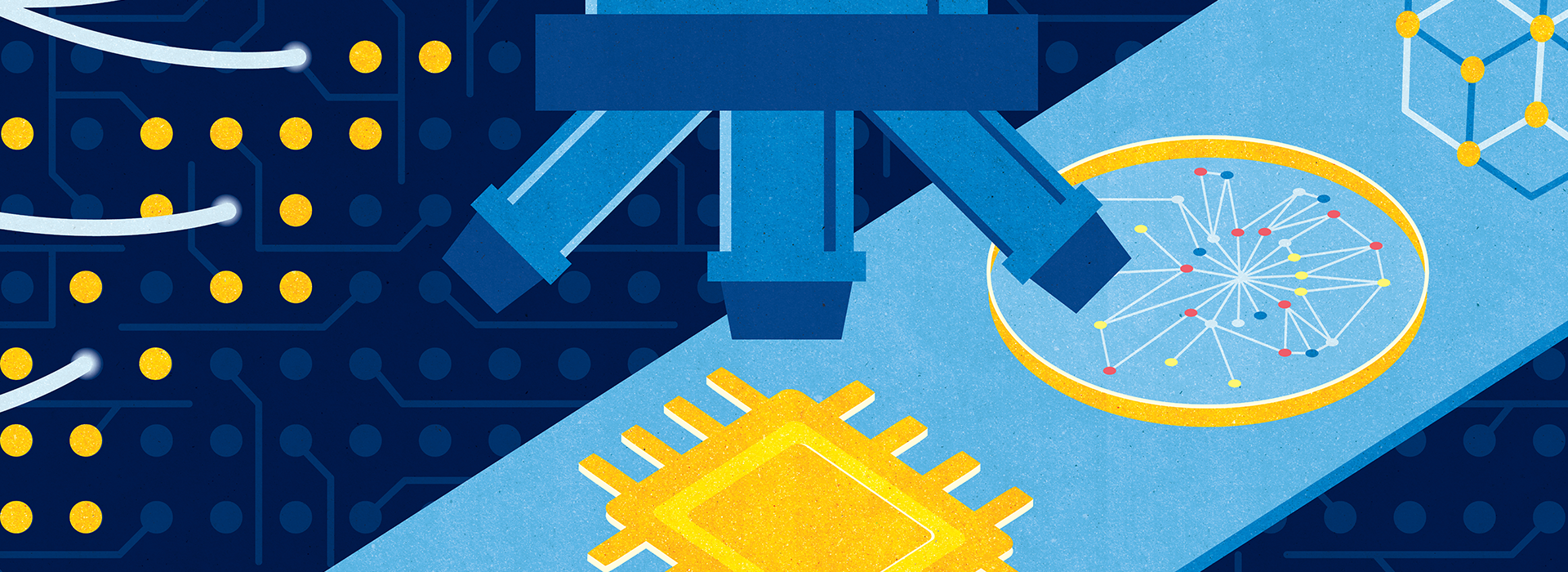By: CIFAR
15 Sep, 2017

The two-day workshop brought together Fellows from CIFAR’s program in Quantum Information Science along with leaders in academia, industry and government to discuss, from a research and development perspective, the progress to date, major bottlenecks and future opportunities related to the development of quantum repeaters and their integration into large-scale quantum networks. Presentations, all of which were invited, focused on the state-of-the-art of the science and open problems. Topics included applications, protocols, components, interfaces, and strategy to create partnerships with industry and other stakeholders.
The backdrop for a discussion on quantum networks is the expectation that, with major efforts from academic researchers and industry players (e.g. Google, IBM, Microsoft, D-wave), quantum computers (QC) will become available in foreseeable future. This splits quantum network applications into one class that seeks to overcome the security issues caused by QC (such as QKD, secret sharing, etc), one class that seeks to utilize the unique capabilities of QC (such as quantum cloud-computing, blind quantum computing, etc.), and one class aimed at quantum-enhanced sensing. Important to note in these contexts is a) that mathematics-based approaches, which are also believed to protect privacy against QC, currently have more support than quantum cryptography and b) that the possibility to link modular quantum computing units is already being investigated in the QC community, e.g. to overcome physical constraints in dilution fridges.
The quantum links making up a quantum network will, depending on distance and environments, likely consist of different types of channels e.g. free-space satellite and ground links as well as fibre-optic links. In recent years, capabilities of both satellite and real-world fibre-links have grown at a fast pace, with Canadian researchers at the forefront. For long-distance, fibre-based links quantum repeaters are needed, possibly using different protocols, e.g., based on discrete or continuous variables, each presenting a set of advantages and challenges.
The individual components for a network are at varying levels of maturity and quality. Single-photon sources based on spontaneous parametric down-conversion of four-wave mixing are extremely reliable but suffer from a trade-off between rate and purity. Single-emitter based sources, such as quantum-dots and diamond colour centres, have progressed at a fast pace over the past few years but still face a number of engineering problems to increase coupling efficiency, spectral stability, and yield. High efficiency single-emitter based sources operating at telecom wavelengths, though highly desired, have yet to be demonstrated. With quantum dot sources having reached a certain level of maturity, development of ‘plug and play’ demonstrator units would go a long way in accelerating the implementation of these sources in quantum network test-beds.
The availability of fast and efficient superconducting detectors — even on the commercial market — has removed wavelength limitations of previously-used avalanche photo-detectors, thus facilitating the use of telecom-wavelength photons. Remaining challenges are to incorporate detection of multiplexed degrees of freedom e.g. spectrally resolving detectors. The development of suitable quantum memory — both based on single emitters (such as NV centres) as well as ensembles (e.g. rare-earth-ion-doped crystals) — is still challenging in that no currently operating memory meets all the benchmarks desirable in a quantum repeater/network. Quantum transducers that link optically encoded quantum states to microwave qubits usable in superconducting QC are the least mature component. Several approaches are currently being pursued, with those based on nano-mechanical oscillators currently leading the way. However, no system has yet demonstrated transduction at the quantum level. It is likely that transducers will be the main bandwidth-limiting component in a network. We note that QC platforms based on, e.g., trapped ions and quantum dots possess optical transitions and thus eliminate the need for a transducer.
An organizational problem is that there is too little incentive to tackle engineering problems, optimize components to meet all requirements (not just excel at one) and develop and analyze complete (and integrated) systems. More collaborations and the creation of test-beds where researchers with different skills can come together would help to remove this obstacle. In addition, test-beds are a good way to showcase research to industry, decision-makers and the public. The prospect of job-creation and opportunities for generating spin-off enterprises must be communicated. A good example is the new European Quantum Technology Flagship Initiative. The Quantum Canada initiative, along with subsidiary fora, is currently exploring a similar approach in Canada.
Industry can provide both investment and a market for the technologies that researchers develop and leverage their connection with decision makers in the government. But for the private sector to get involved in the development of quantum networks, the academic research community and industry must learn how to work together and create mutual understanding of each other’s objectives and problems. Entities such as the Canadian Photonics Industry Consortium could have an important role along with intermediary organizations and University Industry offices. It may be that Canada’s funding ecosystem is missing a piece for strategic and ground-breaking innovation (similar to DARPA in the US) or an entity that will incubate and fund start-ups in the quantum technology space. Government also has an important role to play as a first adopter of new quantum technology, e.g. quantum secured communication links. This would then provide an incentive for an industrial ecosystem to develop.
To make a quantum network a truly compelling proposition to decision-makers and the public we must formulate a simple and clear grand vision as captured by the term “moon-shot”. This vision can feature a single clear and captivating goal, such as Teleporting from coast-to-coast, which is based on technologies that hold commercial and strategic value that can engage industry and government. Given the growing public attention to online privacy, a term like transforming cyber-security could also be used. It is important to have a message that projects imagined opportunities and is not based on technical terms. We must emphasize the urgency of investing now and pointing to the risk-management aspect in a future world with widely accessible quantum computers.